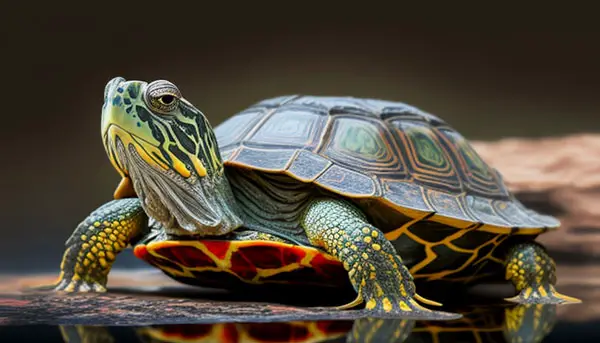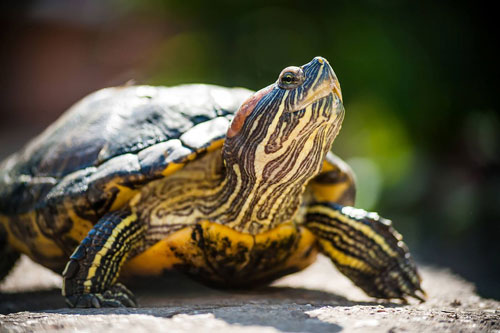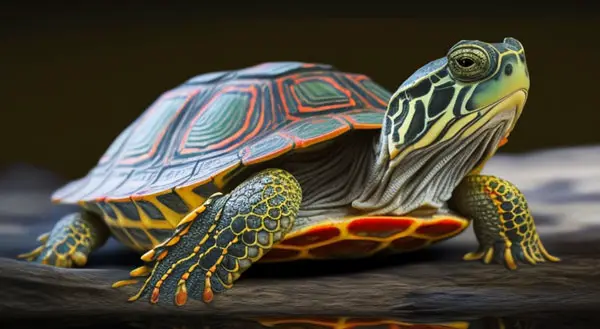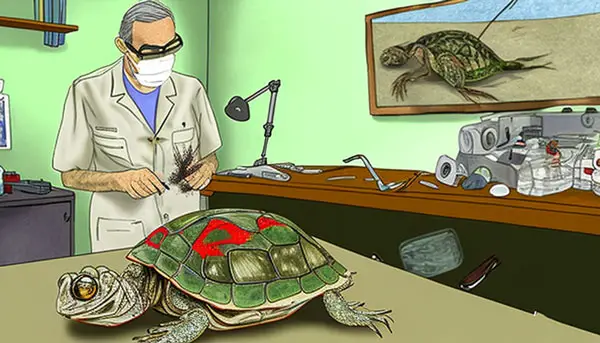How to Prevent Common Injuries in Pet Turtles
Despite having a tough protective shell on its back, your pet turtle isn’t immune to injuries. The shell itself can get fractured or damaged and sustain heavy injuries. Your turtle may also suffer cuts and bruises on the skin, beak injuries, broken limbs, etc. However, learning how to prevent these injuries from occurring can help save your turtle from a lot of pain and suffering.
In this article, we’ll comprehensively cover the most common injuries that occur in pet turtles and the preventive measures for each of them. If you already have an injury, we’ll share with you tips on the different methods of promoting healing and preventing infections, including medication and wound care tips.
How to prevent common injuries in pet turtles
Contents
To prevent various injuries in your pet turtle, you’ll first need to understand what they are and why they occur in the first place. The common types of turtle injuries include:

Shell damage
This is one of the most common types of injuries witnessed in pet turtles. This can be a serious injury since the shell is part of your turtle’s anatomy and plays a crucial protective role for your turtle’s internal organs.
Some major causes of shell fractures in turtles include falls, being bitten by other pets in the house, e.g. a dog, and fights with other turtles.
If your turtle tries to escape from its tank and falls from a high height, its shell may also become fractured. Accidentally dropping your turtle can make its shell become damaged.

Unfortunately, a fractured shell can make it easy for bacteria and fungi to enter your turtle’s body and cause diseases. If you notice your turtle has a fractured shell, it’s important to visit your reptile vet as soon as possible to start the broken shell repair process.
The healing process for the shell is also pretty slow. While the underlying soft tissue may heal in 2-3 weeks, the shell fractures can take many months to become fully healed and stable.
Cuts and scrapes on the skin
Another common injury in pet turtles is cuts and scrapes that can occur anywhere on the skin. These may be caused by rough handling, the presence of sharp objects in the turtle’s enclosure, and fights with other turtles. Poor water quality may also cause skin problems, including cuts.
Note that these cuts can range from minor scrapes which you can easily treat at home but if the cut is so deep that it leaves the bone underneath, then you should consider taking your turtle to the vet for professional assistance. Bite wounds, in particular, can be quite serious and lead to deep wounds.
Beak and facial injures
It’s also not uncommon for pet turtles to suffer injuries on their beak or face. These can be caused by a wide range of things, including fights with other turtles or trauma. And they can range from minor cuts, abrasions, or severe injuries like a facial bone or a broken jaw.

Fractures on the beak or mouth are usually hard to treat and the healing process can be problematic. This injury can also make it hard for your turtle to properly grasp/ingest its food which is crucial for its survival. Reconstructing the mouth can be challenging and the healing process itself may take a long time.
Broken leg
Your turtle may also suffer leg injuries when its limbs get fractured. Sometimes this kind of injury can be so severe that an amputation will be required. Common causes of this type of injury include accidental dropping or improper handling. However, nutritional deficiencies or metabolic bone disease can also cause weakened bones or bone fractures.
Tips for preventing pet turtle injuries:
Here are some helpful tips to help you prevent your turtle from getting various turtle injuries:

Ensure your turtle lives in a safe enclosure
Get rid of any sharp objects such as rocks, toys, and décor items in your turtle tank that may cause injuries to your turtle.
Additionally, make sure it has a smooth and comfortable basking pot where it can rest for hours without suffering any type of injury.

Avoid improper handling
You should also avoid inappropriate handling when it comes to your pet turtle. Essentially, you should only pick up your turtle when it’s absolutely necessary. Grab it gently along its shell age (don’t squeeze the shell) near the body mid-point. (Source).
Also, keep in mind that your pet may try to wrestle itself off your hands or urinate when you lift it off the ground, so you should be careful not to drop it if it does any of these as you may end up fracturing its shell or injuring other parts of its body.
Provide your turtle with suitable living conditions
Maintain suitable living conditions in your turtle’s enclosure with quality water, appropriate temperature, and overall tank cleanliness.
This way, you won’t have to worry about your turtle feeling uncomfortable inside its tank and wanting to escape, and risk falling and injuring its body.

If you still want to escape-proof your turtle enclosure, you can cover it with a lid, but make sure it has ventilation.
Don’t overcrowd your turtles
If you’re keeping multiple turtles in the same tank, provide them with enough food. Also, ensure they have a spacious tank to avoid overcrowding. These measures will help prevent territorial fights.
This is a good measure to prevent your turtles from fighting over resources and possibly injuring one another and leaving each other with serious bite wounds.
Providing adequate hiding spots for all the turtles is also helpful in making your pet turtles hide in case of fights and further prevent injuries.
Above all, you should regularly monitor your turtles. You’d want to closely supervise how your pet interacts with fellow turtles or even other turtles in your home.
You should also look for potential signs of injuries such as lethargy, loss of appetite, and other signs of s sick turtle and consult your reptiles vet.
Wound care and medication
If your turtle gets injured, then you should provide it with wound care as well as any helpful medication to help with its healing process.

Here are the key steps to follow for proper wound care in your pet turtle:
Step 1. You should first asses the wound to see how severe it is and whether it’s bleeding. In case it’s bleeding, you should take it to your vet immediately.
Step 2. For a minor wound, simply clean it using an antiseptic solution and sterile gauze. And be gentle while doing so to avoid making the wound worse.
Step 3. After the cleanup, apply a small of antibiotic ointment on the area to prevent the possibility of an infection occurring
Step 4. Continue monitoring how the wound behaves during the recovery process, and watch out for signs of infection such as redness, swelling, discharge, etc. In case of an infection, you’ll need to take a trip to your vet immediately.
Step 5. Continue to offer supportive care to your turtle during the healing process by providing it with suitable enlivenment for recovery and offering it a nutritious diet.
Be sure to administer any medication prescribed by your vet to promote healing and keep away infections in your pet turtle.
We found this helpful video showing discussing helpful tips and suggestions for helping your injured pet turtle
Video:
Final Verdict
It’s quite common for pet turtles to suffer injuries whether it’s shell damage, broken limb, cuts and bruises on the skin, or facial injuries. The good thing is that you can put various measures in place to help prevent these injuries in your pet turtle and the pain and suffering that comes with it.
You can shield your turtle from injuries by eliminating sharp objects in its enclosure. You should also carefully handle your turtle. Provide your turtle with plenty of hiding spots where it can retreat in case of fights with fellow tank mates. Above all, ensure you maintain clean living conditions for your pet turtle.



